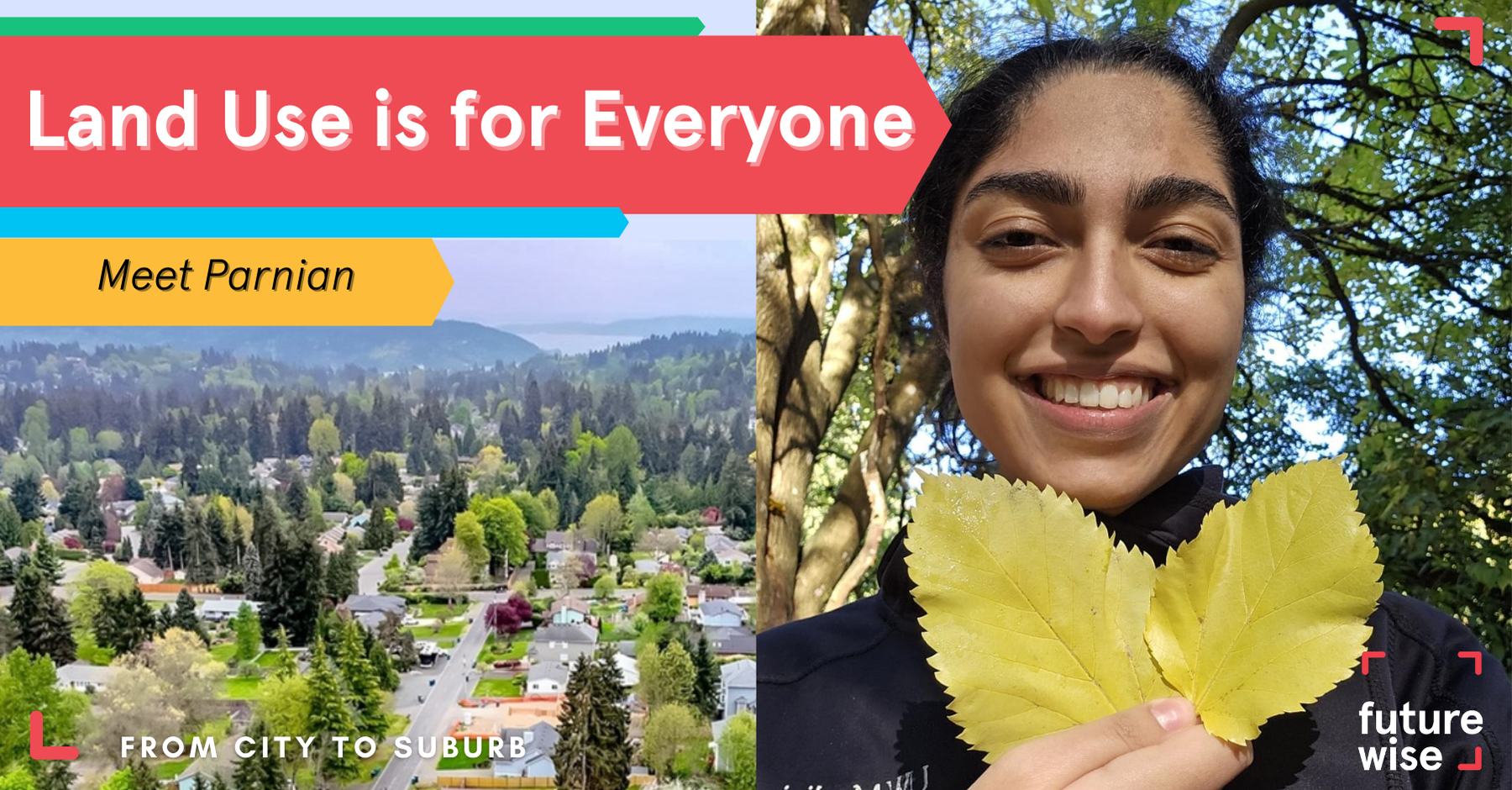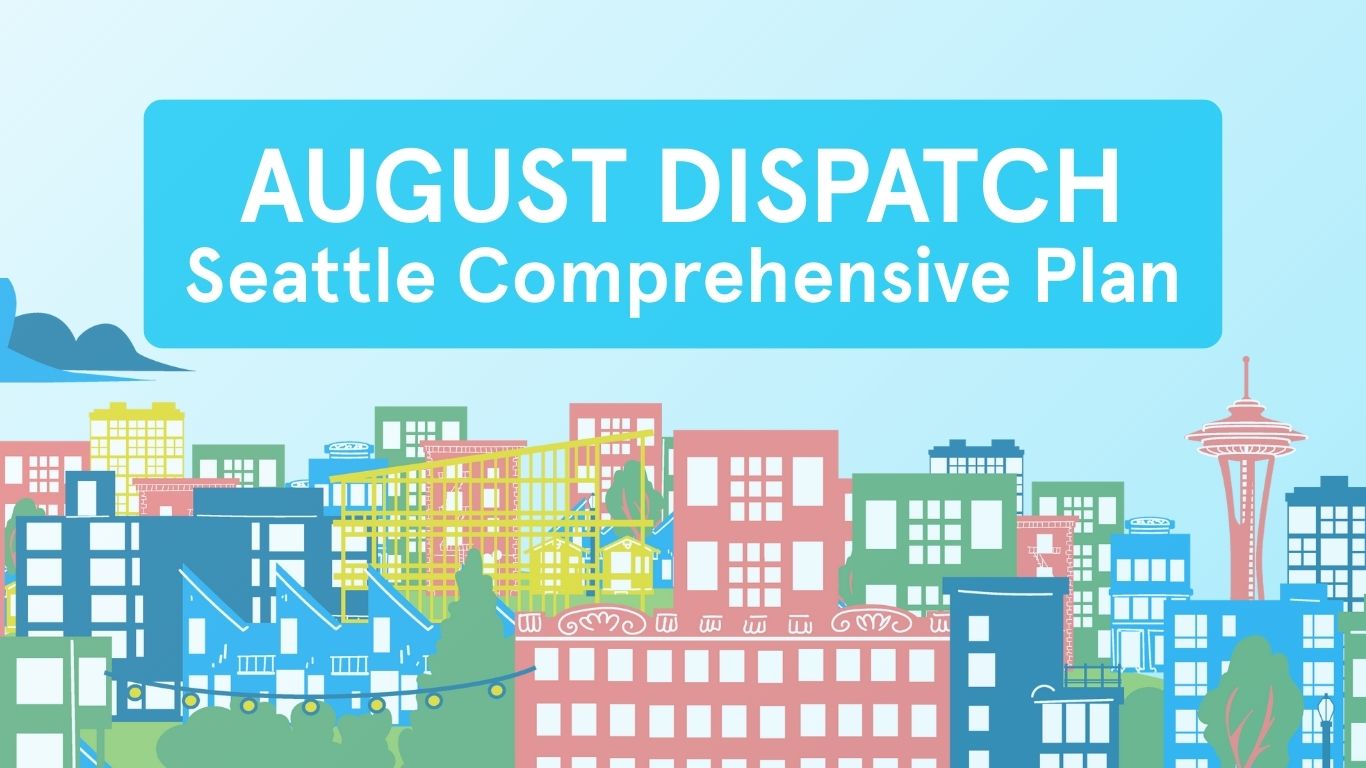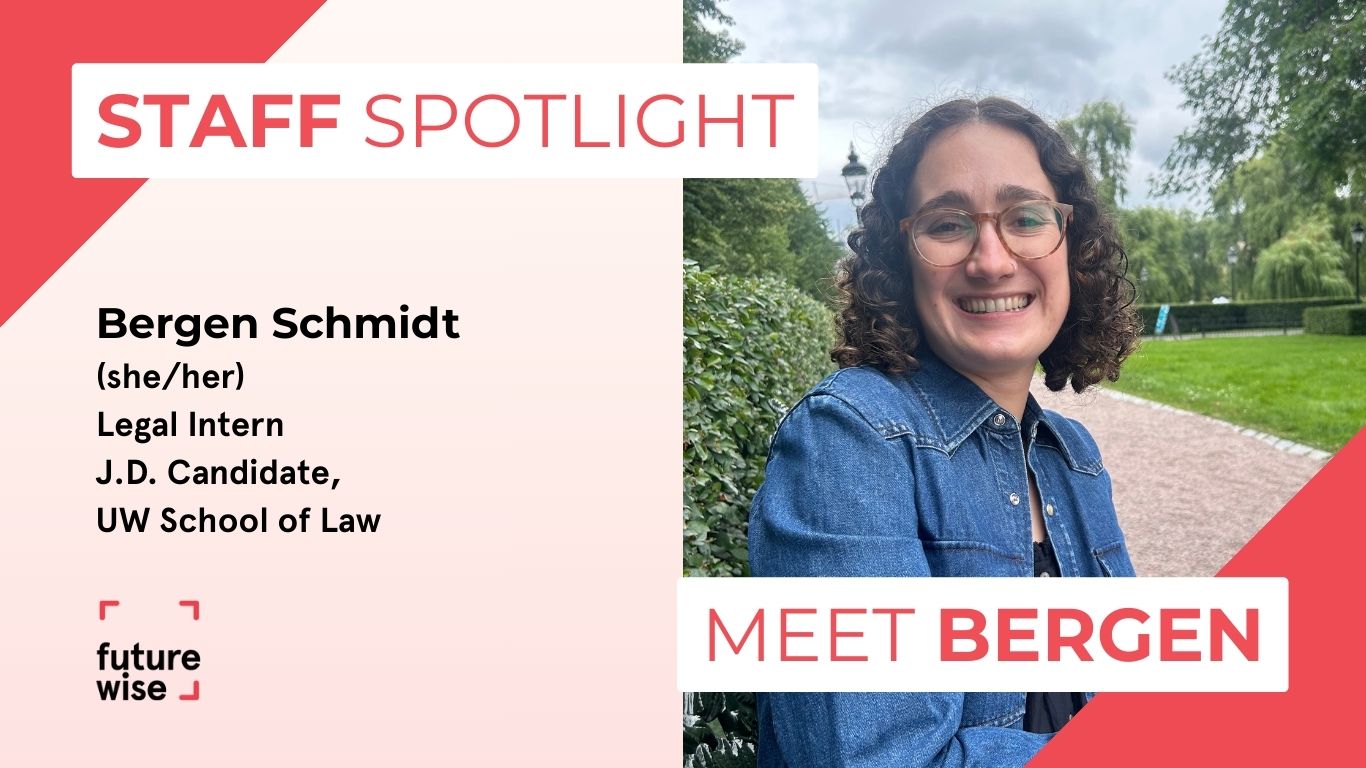Land Use is for Everyone — From the City to the Suburb
From the City to the Suburb
The next profile in our Land Use is for Everyone series is Parnian Karimi (check out the intro to our new series and first interview here). She’s a ‘23 UW grad with a degree in biology and public health, and is on her way to medical school. She was the first person I thought of when I considered interviewing someone from a small suburb, but she is certainly not a typical suburbanite. She was born in Iran, raised and lived in Stockholm, Sweden for 15 years, and has only spent the last five years of her life in Washington. Four of those years she’s lived with her family in Brier, Washington, a suburb just north of Seattle, population 6,643.
My original intention with this interview was to hear her experience about living in a suburb, but it quickly digressed into her experiences in Sweden and comparing the different communities and cultures she’s experienced, a huge part of what shapes her view of the suburb she currently lives in. I hope you enjoy.
Tell me about where you live, to help our readers understand where you’re coming from.
I live in Brier, a suburb half an hour out of Seattle, in a house with my little brother and two parents. We’re between a lot of urban centers, pretty close to Seattle, Bellevue, more central Kirkland. There’s a lot of urban areas around, but Brier itself is not very urban. I’ve lived here for four years now, and almost everything for work and school is quite a bit away from Brier.
Why do you live there?
My parents were house hunting for a long time, and had a few different requirements– it couldn’t be so far from central Seattle because they work there, and couldn’t be so close to urban hubs because that’d be super expensive. They chose Brier because it has good schools and places to play, and felt safe for my little brother.
What do you like the most about your community?
The thing I like is the thing I was most surprised by– the sense of community. Sometimes suburbs that don’t have good public transit struggle with a sense of community.
Stockholm is designed around a municipality, required to have housing, a mix of apartments, a robust supermarket with affordable but varied goods, a school, and a mall, all within walking distance from each other. That makes it quite easy to have the sense of community; people are always walking about, living their lives outside a car. It’s built around the idea that basic needs are met within walking distance.
Brier is not designed to be able to walk to a mall, and I’m shocked there’s still a community. There’s farmers markets, parades, firefighter events for the kids. Lots of attempts to create community, but it would be a lot more successful if you could walk in the community.
So how do you get around?
You have to have a car, that’s my biggest complaint. There’s not a lot of things to walk to. They’re not so far away that you couldn’t walk, but there’s no sidewalk. There is a bus stop that is quite close to the house, but the roads are exclusively for cars. There isn’t a specific bike lane so I don’t feel comfortable biking, especially not with my little brother. You have to drive anywhere. It’s really really frustrating.
How have you created a community without being able to walk everywhere?
My one true love is libraries; they’re the most magical places on earth, and grossly underutilized. The library is the one spot I can walk to, and it has childcare resources, community events knowledge, even your voter guide. I knew about the firefighters’ event because it was on the poster board. Being able to walk there has been very valuable. It requires a different kind of planning. My neighbor will tell me about something and you have to schedule and figure out where to park, and think about driving times. I have been less spontaneous for community events.
Where would you send a visitor for the weekend?
The northern tip of Lake Washington has a little park next to it, it’s very quaint and a nice place to people watch. Kenmore Air, it’s a little airport for planes on water, you can see them takeoff and land, it’s also a lovely place to sit and enjoy the nature. Little bit of a complaint, there’s a golf club when there should be a forest, and I would love to be able to hike.
How does where you live now compare to other places you’ve lived?
It’s a philosophical difference, but it shows itself in tangible ways. In Stockholm you have your daily walk. You get home, cook dinner, and go on your daily walk; people know it’s a healthy thing to do but they just want to go out, the whole city feels designed for people. I need to see a pretty tree on my way to work. I need to feel like I’m seeing other people.
It feels like the US is not designed that way, but instead it’s very isolated because you have to take cars to go to work, entertainment, or get your groceries. Cars are associated with freedom, but I feel constrained in a car. I try to go on walks in Brier, and I can go through a couple cul de sacs, but I can’t explore the city. It’s so much easier to connect with friends, relax, and be mindful when the city is designed to foster that. I say this a lot, but it was designed for cars and not for people.
What would you change about where you live?
I’m tempted to say public transit, but I’ll say sidewalks. There’s a lot of casual greenery; I would love to walk around my community, where I can take your brother out without being afraid.
Anything else you want to add?
I want to comment on single-family zoning– it’s wild to me that there’s houses in the heart of Seattle. It looks like a suburb, and to be honest that’s kind of crazy to me. I know they’re beautiful old homes, so I totally understand why you don’t make an apartment complex. If it was an apartment complex, they’d have more space, more people would live in a dense way, and we would have so much more housing in an area that’s very convenient. It’s dense without feeling crowded. A family friend in Sweden has a big apartment, two people live there comfortably, have the agency of owning the property, train station five minutes away, bus stop two minutes away, it’s a complex that still has green spaces. They walk to school, there’s a supermarket on their block, and it makes so much sense. Everyone has enough space.


